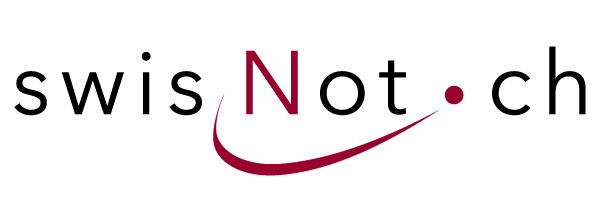Fiscal changes for 2011
Jean-Frédéric MARAIA, Tax lawyer, Schellenberg Wittwer / Legal Practice, in Geneva
2011 is marked by the entry into force, at the Federal level, of the latest provisions forming part of the business II reform. At the canton level, with effect from 1 January 2011, similar rules provided for in the LHID (Federal Law on the Harmonisation of Direct Taxes) are directly applicable in those cantons which have not made the necessary adaptations to their legislation at that date.
The most important of the new provisions is the capital contribution principle which replaces the principle of nominal value, constituting without doubt, the main change, taking account of the important consequences it has for the Swiss tax system.
In second place, the legislature has introduced new cases of deferred tax in the field of independent shareholder income tax together with a relaxation of re-investment conditions. In addition, still in the field of independent shareholder taxation, profits from liquidation are now taxed more favourably than in the past.
In third place, the new provisions are also applicable to legal entities. In addition to the changes affecting reinvestment, equally applicable to tax on profits, the legislature has relaxed the conditions relating to the application of the participation reduction.
These different measures have been set out briefly below, distinguishing the tax on natural individuals from that on companies (see under 2). A separate section will in any case be devoted to the principle of capital contribution in view of its special nature (at the level of natural individuals and companies) (see under 1.).
1. Contribution principle
According to the contribution principle, the refund to holders of rights in shares of contributions, charges or supplementary capital payments made by them from 31 December 1996 onwards, is treated in the same way as the refund of share capital or company capital (Article 20(3) of the Loi fédérale sur l’impôt fédéral direct (Federal Law on Direct Federal Taxation – LIFD) and Article 7b of the Loi fédérale sur l’harmonisation des impôts directs (Federal Law on the Harmonisation of Direct Taxes – LHID) combined with Article 72h LHID).
The law makes the same provision in the area of withholding tax, providing nonetheless that tax treatment deriving from the capital contribution principle only applies when the capital or co-operative company records the contributions, fees or supplementary payments on a special account within its commercial Balance Sheet and communicates all changes to this account to the Federal Tax Administration [Article 5(1-bis) of the LIA (the Withholding Tax Law)].
Fundamentally, the introduction of this new principle represents a better implementation of the requirements of the constitutional principle of taxation capacity, to the extent that a shareholder who has contributed to his company in the form of a supplementary payment is not then taxed on the return of this amount. In the case of liquidation for example, up to 31 December 2010, the shareholder would only be exempted from tax on the part corresponding to the repayment of share capital.
While on the face of it the principle appears simple, it becomes more complex in its application because it affects a large number of operations such as business restructuring or retrenchment and raises sensitive questions relating to formal aspects of proof and accounting.
The Swiss Federal Tax Administration (FTA) has recently published a circular commenting on several aspects connected to this principle. According to the FTA, the “Issued reserves of capital contribution” can only be made up of open contributions effected directly by holders of shares. As a consequence, hidden contributions and the attribution of benefits between associated companies have to be recorded in “other reserves”. So far as distributions are concerned, they will be taxable if drawn from “Other Reserves”. Furthermore, issued reserves of capital contributions cannot be repaid free of tax save through the use of a separate coupon. It should be noted that indirect distributions of profits are always considered by the FTA as distributions from “Other Reserves”.
In order to benefit from this new tax treatment, contributions, charges and supplementary payments effected after 31 December 1996 must have been recorded in a special commercial Balance Sheet account. Taxpayers must transfer open capital contributions which have been paid between 1 January 1997 and 31 December 2010 to the account no later than the final Financial Statements for the 2011 accounting period. For the surplus it would be best to refer to the FTA circular which contains numerous practical notes relating to communications in the field of withholding tax.
2. The other main changes
2.1 Taxation of natural individuals
In the framework of the business II reform, the legislature has introduced three important changes for individual shareholders (income tax) which came into force in 2011.
Firstly, the re-investment conditions have been relaxed. In effect, it is no longer necessary to show that the asset forming the subject matter of the reinvestment has the same economic function for the business as the assigned asset. It is sufficient that it functions as a fixed asset necessary for the running of the business and is located in Switzerland. The law reserves the case however of the replacement of immovable property with moveable assets.
Secondly, the legislature has introduced new cases of deferred tax. When immovable property recorded under fixed assets is transferred from commercial assets to private assets, the taxpayer can ask that only the difference between the cost of the investment and the value chargeable to income tax (“recovered amortisation”) be taxed at the moment of the transfer. The rest of the latent reserves (“roll-over capital gain”) are taxed by way of income from independent profit-making activities when the property is next sold on. In those cantons which apply a unitary system for special tax on earnings from property, this new provision will be without effect because the roll-over capital gains will be exclusively subject to this tax which is in any case only collectable, according to the relevant procedures, at the moment of its subsequent assignment. It is important to note that the leasing of a going concern will only be considered as a transfer to private assets on request by the taxpayer.
On the other hand, in the case of division of the estate on succession when only one of the heirs continues with the commercial business, they can ask that the taxation of the latent reserves be deferred to a subsequent disposal so long as the values determining income tax are those succeeded to.
An FTA circular of 16 December 2009 has been published dealing with these changes.
Thirdly, the legislature has introduced a relaxation of the tax on liquidation profits for independent businesses to avoid what has been referred to as the “shocking” situation resulting from the progressive nature of tax rates. This measure consists of (i) the separate taxation of total latent reserves realised over the last two business accounting periods, (ii) the admission for deduction of actual pension redemptions in normal conditions or fictitious redemptions, namely those which have not been effected but ought to be and would be deducted in normal conditions, (iii) the application on the balance of latent reserves of a rate of tax corresponding to one fifth of such amount but at least at the level of 2% (at the canton level, the cantons are free to set the rate applicable for the tax on the reserve balance). This relaxation of taxation of liquidation profits is applied equally to the surviving spouse, to the other heirs and legatees in any case so long as they do not continue with the running of the business that they have succeeded to. The tax calculation will be effected at the latest 5 financial years after the financial year in which the taxpayer died. Here again it should be noted that the FTA has also published a circular dealing with these new provisions.
2.2 Taxation of legal entities
So far as legal entities are concerned, the main change introduced in 2011 is the relaxation of the conditions for the participation reduction. Up to 2010 this regime was only applied in the case where a party owned a shareholding of more than 20% or with a monetary value of more than 2 million Swiss francs. The reform has reduced the percentage from 20% to 10% and the value from 2 million to 1 million Swiss francs. A third alternative condition permitting the application of this regime has also been introduced, namely the ownership of a shareholding giving the right to at least 10% of the profits or reserves of another company. Parallel to the above, so far as taking account of the capital profit in the calculation of the reduction is concerned, the condition of the assignment of a shareholding equal to 20% of the capital of another company has been replaced by two alternative conditions, that is the assignment of a shareholding equal to 10% of the capital of another company or of a shareholding giving the right to at least 10% of the profits or reserves of another company. The new provision provides nonetheless, that if the shareholding falls below 10% following a partial assignment, the reduction can only be agreed on each further profit from assignment if the monetary value of the shareholding rights at the end of the tax year preceding such assignment was at least 1 million Swiss francs. The FTA has published a circular taking account of these provisions.
Finally, the relaxation of the re-investment conditions described above for independent businesses applies equally to companies (the removal of the condition concerned with the function of the goods). Furthermore, in the case of the replacement of shares, the law now provides that latent reserves can be transferred to the new shareholding if the shareholding which was assigned was equal to at least 10% of the share capital or to at least 10% of the profits and reserves of another company and if the company owning this shareholding does so for at least one year.
Geneva, 01.01.2011




